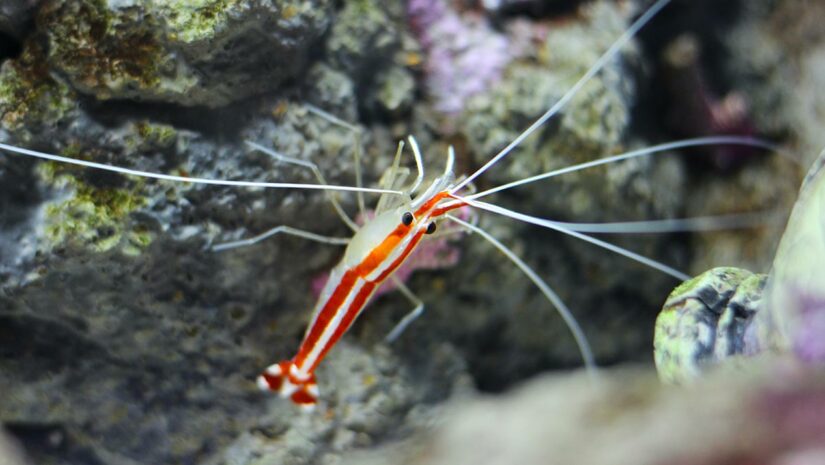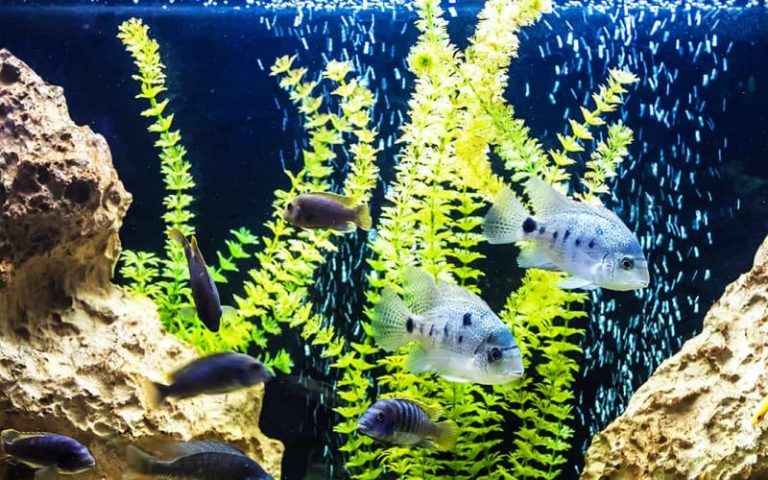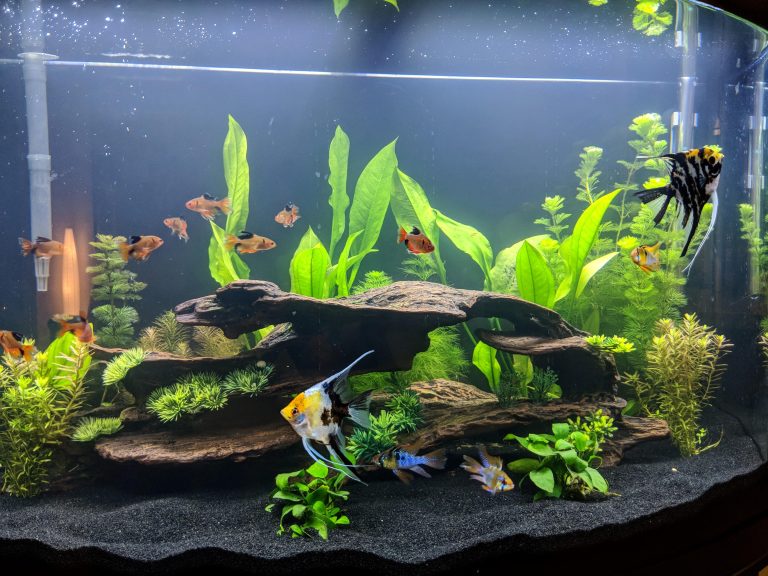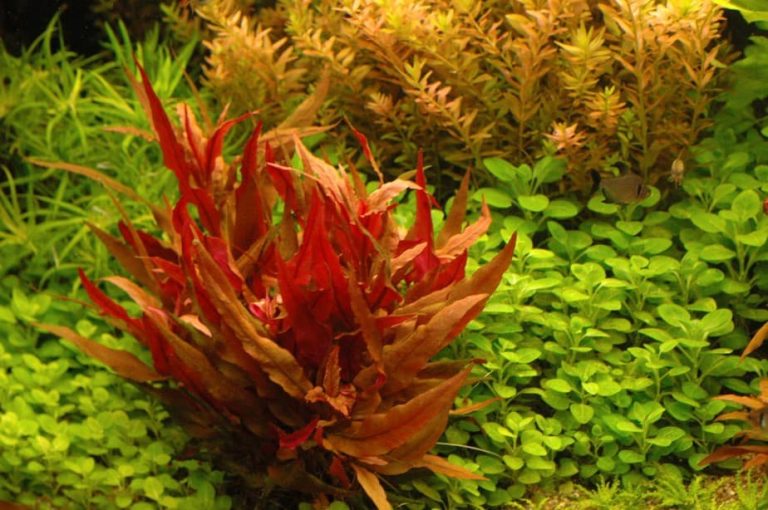What Do Cleaner Shrimp Eat? Uncovering Their Surprising Diet!
Cleaner shrimp mainly eat parasites and dead skin cells off other fish. They are known as scavengers and opportunistic feeders.
Cleaner shrimp are a popular addition to marine aquariums and have become increasingly popular due to their unique cleaning behavior. They belong to the genus lysmata and are found in coral reefs all around the world. These tiny shrimp have a symbiotic relationship with fish whereby they clean them of unwanted parasites and dead skin cells.
In addition to their cleaning role, they also scavenge for food and will opportunistically feed on small fish, plankton, and algae. Cleaner shrimp are an essential part of an aquarium’s ecosystem, and taking care of them is vital for maintaining the overall health and balance of the aquarium.

Credit: www.scuba.com
The Natural Diet Of Cleaner Shrimp
Cleaner shrimp are magnificent creatures that can be seen inhabiting coral reefs all around the world. These shrimp are known for their cleaning services, which are highly sought after by many other inhabitants of the reef. The main question that comes to mind about these shrimp is, what do they eat?
In this blog post, we will delve into the natural diet of cleaner shrimp, exploring their primary sources of food and the analysis of wild-caught cleaner shrimp’s stomach contents.
Main Sources Of Food In The Wild
Cleaner shrimp’s natural diet mainly consists of parasites and dead tissue, making them very efficient cleaners. Here are some of the main sources of food that cleaner shrimp consume in the wild:
- Parasites: Cleaner shrimp eat ectoparasites, which are parasites that live on the surface of the host’s body. These can include skin flukes, lice, and other similar organisms.
- Dead tissue: When a fish or other creature dies, cleaner shrimp swarm the carcass and feed on the dead tissue. This helps prevent the spread of diseases around the reef.
Analysis Of Wild-Caught Cleaner Shrimp’S Stomach Contents
Studying the stomach contents of wild-caught cleaner shrimp can give us a clearer picture of their natural diet. Here are some key points from analyzing their stomach contents:
- Omnivores: Cleaner shrimp are omnivorous and will eat a variety of organisms, including crustaceans, mollusks, and other shrimp.
- Frequency of feeding: Cleaner shrimp feed often but in small amounts. This is because they are constantly cleaning the reef and ingesting small amounts of food as they go.
- Varied diet: While parasites and dead tissue make up a significant portion of the cleaner shrimp’s diet, they also consume a variety of other organisms.
Overall, cleaner shrimp play a vital role in maintaining the health and cleanliness of coral reefs and the organisms that inhabit them. Studying their natural diet not only gives us a better understanding of these remarkable creatures, but it also aids in the conservation and understanding of coral reef ecosystems.
Cleaner Shrimp In A Captive Environment
Cleaner shrimp are fascinating creatures that provide valuable benefits to their aquatic surroundings. They have a unique and mutually beneficial relationship with other fish species as they keep them clean and healthy. However, when it comes to feeding cleaner shrimp in a captive environment, improper feeding can lead to potential health issues.
We will explore the common food types for captive cleaner shrimp, the importance of providing a varied diet, and potential health issues from improper feeding.
Common Food Types For Captive Cleaner Shrimp
In the wild, cleaner shrimp have a varied diet consisting of parasites, dead skin, and mucus from other fish species. However, in a captive environment, their diet needs to be supplemented with additional food types. The common food types for captive cleaner shrimp are:
- Commercially available shrimp pellets
- Fresh or frozen brine shrimp
- Mysis shrimp
- Chopped up pieces of raw fish or shrimp
- Microalgae and spirulina
The Importance Of Providing A Varied Diet
A varied diet is crucial for the health and well-being of cleaner shrimp in captivity. Just like any other living organism, cleaner shrimp require a balanced diet that contains all the necessary nutrients and minerals. By providing a varied diet, you can ensure that your cleaner shrimp gets all the nutrients they need for optimal health.
A varied diet will:
- Prevent malnutrition and diseases
- Promote strong immune function
- Increase growth and reproduction
Potential Health Issues From Improper Feeding
Improper feeding of cleaner shrimp can result in various health issues, including:
- Malnourishment
- Weight loss
- Weak immune system
- Inadequate growth or reproduction
- Disease susceptibility
It’s crucial to avoid overfeeding your cleaner shrimp, as it can lead to water quality issues with excess food left over in the aquarium. As a result, your shrimp may suffer from digestive problems, bloating, and other health issues. Monitoring the amount and frequency of feeding is essential in maintaining the health of your cleaner shrimp.
To keep your cleaner shrimp healthy and active in a captive environment, providing a varied diet is crucial. A diet that contains an appropriate mix of commercial shrimp pellets, fresh or frozen brine shrimp, mysis shrimp, chopped up pieces of raw fish or shrimp, and microalgae and spirulina is necessary.
Remember, improper feeding can lead to various health issues, so it’s crucial to maintain a well-balanced diet and monitor the amount and frequency of feeding.
Unexpected Foods For Cleaner Shrimp
Cleaner shrimp are known for eating the parasites and dead skin off of their tank mates. However, they also enjoy other foods that may come as a surprise. Here are some food sources that are not commonly associated with cleaner shrimp:
- Frozen foods: In addition to live prey, some cleaner shrimp have been known to consume frozen foods like brine shrimp and mysis shrimp.
- Vegetables: Believe it or not, some cleaner shrimp enjoy leafy greens like spinach and seaweed. These vegetables provide necessary nutrients to keep the shrimp healthy.
- Pellet foods: Some cleaners have been known to consume pellet foods that are designed for fish. These include protein-rich options like krill and plankton.
The Benefits And Risks Of Introducing New Foods To Cleaner Shrimp
As with any change in diet, there are both benefits and risks to introducing new foods to cleaner shrimp. Here are some to consider:
- Benefits:
- Variation in nutrient intake: Introducing new foods can provide a shrimp with more diverse nutrients, leading to a healthier diet.
- Stimulating appetite: Sometimes cleaner shrimp may become disinterested in their regular diet. By offering new foods, you may entice them to eat more regularly.
- Encouraging breeding: Certain foods, like brine shrimp, can encourage cleaner shrimp to breed.
- Risks:
- Allergic reactions: Just like humans, shrimp can have food allergies. Introducing a new food source may cause an allergic reaction that could be harmful or even fatal.
- Disinterest in regular diet: If a cleaner shrimp becomes accustomed to a new food, they may lose interest in their normal diet, leading to health issues.
- Disease transmission: If the new food source is not properly sanitized, it could lead to introducing disease into the tank.
Using Food To Encourage Breeding And Disease Prevention
Food can be a powerful tool in keeping cleaner shrimp healthy and encouraging breeding. Here are some tips:
- Breeding: Offering protein-rich foods like brine shrimp can encourage cleaner shrimp to breed. Additionally, feeding them a diet rich in calcium can ensure a healthy brood.
- Disease prevention: Some foods, like garlic, have natural antibiotic properties. Adding garlic to cleaner shrimp’s diet can help prevent disease and keep them healthy.
Frequently Asked Questions Of What Do Cleaner Shrimp Eat
What Do Cleaner Shrimp Eat?
Cleaner shrimp typically eat dead tissue, parasites, and other debris that attach themselves to other marine animals, such as fish. They may also eat leftover fish food that settles on the ocean floor.
How Do Cleaner Shrimp Clean Fish?
Cleaner shrimp use their pincers to remove parasites and dead tissue from the skin, fins, and gills of fish. They do this by picking off and eating the debris that attaches itself to the fish.
How Often Should I Feed My Cleaner Shrimp?
Cleaner shrimp are scavengers and do not need to be fed every day. They can survive on the leftover food that settles on the ocean floor. However, you can offer them small bits of fish or shrimp once a week as a treat.
Can Cleaner Shrimp Live With Other Shrimp?
Cleaner shrimp can live with other shrimp as they are generally peaceful creatures. However, it is best to avoid keeping them with larger shrimp that may view them as prey.
Do Cleaner Shrimp Need A Specific Type Of Aquarium?
Cleaner shrimp do not need a special type of aquarium, but they do prefer a well-established saltwater tank that mimics their natural habitat. Water quality is key, and they require stable ph and temperature levels for optimal health.
Conclusion
To sum up, cleaner shrimp are fascinating creatures that are beneficial to any marine aquarium ecosystem. By cleaning other fish and feeding on parasites, the cleaner shrimp keeps the overall health of the aquarium’s inhabitants in check. Their diet is simple, consisting mainly of parasites, dead tissue, and certain types of algae.
However, it’s important to make sure that they are well-fed to avoid them preying on smaller fish and shrimps in the aquarium. If you’re considering adding cleaner shrimp to your aquarium, be sure to check the compatibility with other marine species and provide a suitable home with plenty of hiding spots.
Being able to closely observe and learn about the behavior and diet of these fascinating creatures is just one of the many joys of having a marine aquarium.






